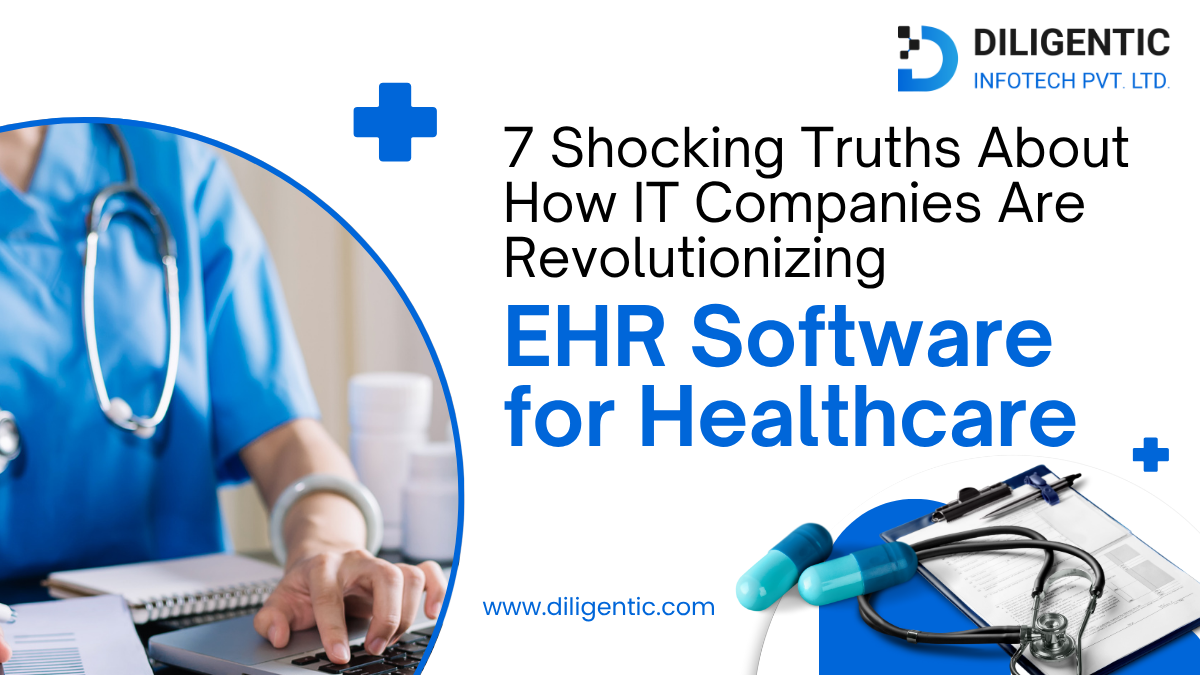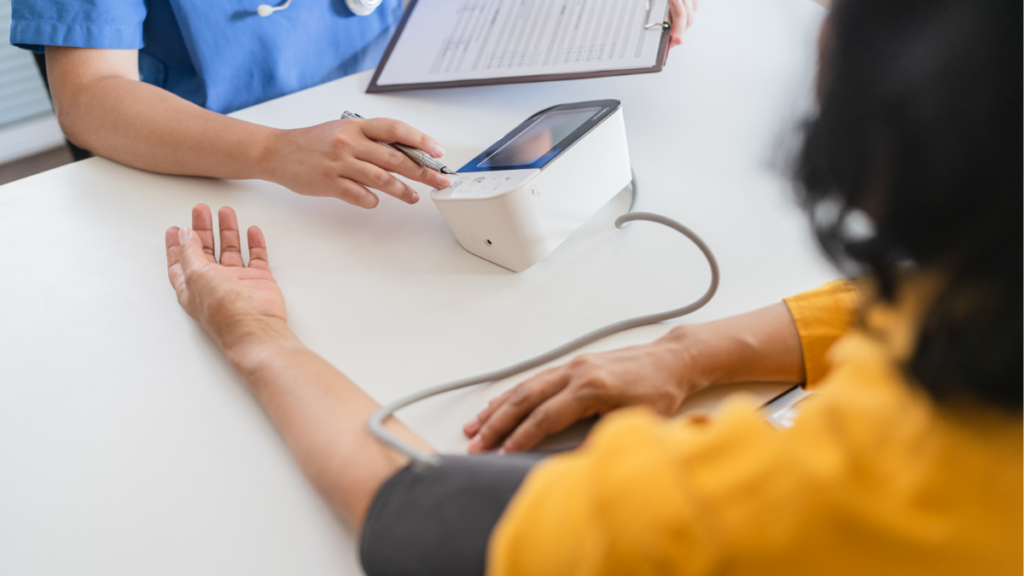SHARE

7 Shocking Truths About How IT Companies Are Revolutionizing EHR Software for Healthcare

EHR software (Electronic Health Record) is no longer just a digital replacement for paper files. It has become the engine behind smarter, faster, and more personalized patient care. IT companies are not only updating electronic health records; they’re reimagining how healthcare operates. From enabling real-time remote patient monitoring to powering predictive analytics, healthcare IT services are creating groundbreaking changes that many aren’t even aware of. This article explores 7 surprising ways IT companies are revolutionizing EHR systems and making digital transformation in healthcare truly impactful.
Table of Contents
How IT companies are revolutionizing EHR system
1. EHR Software is No Longer Just Record-Keeping

What’s the big shift?
Electronic health records started as digital folders to store patient information. However, IT companies have turned EHR into intelligent systems that actively support clinical workflows.
Through custom-built integrations and health information systems, EHR platforms now do much more than hold data. They help doctors identify patient risks, reduce duplicate tests, and streamline diagnosis by pulling data from labs, pharmacies, and even wearable devices.
What’s new:
- Instant access to lab results across departments.
- Integrated prescription alerts to avoid drug conflicts.
- Voice-to-text clinical notes powered by AI.
2. Remote Patient Monitoring is Built Into the System
What changed:
Remote patient monitoring isn’t an added feature anymore. It’s built right into many EHR systems. Thanks to healthcare IT solutions, hospitals can now track vital signs in real time from home-based devices.
Devices like smartwatches, glucometers, or pulse oximeters feed data directly into the EHR. Physicians can monitor patient status daily without needing in-person visits.
Why it matters:
- Reduces hospital readmissions.
- Improves chronic condition management.
- Enables early intervention before symptoms escalate.
Real example:
A cardiology clinic uses EHR-integrated heart rate monitors to detect irregular rhythms, preventing strokes in high-risk patients.
3. AI Is Quietly Shaping Medical Decisions
AI isn’t futuristic; it’s already here.
Many IT companies are embedding artificial intelligence within EHR software to analyze data patterns and assist clinical decision-making. These AI tools don’t replace doctors; they enhance their capabilities.
What AI in EHR systems does:
- Flags abnormal results in real-time.
- Suggests differential diagnoses based on symptoms.
- Predicts patient risks using historical data.
This saves time and lives.
Doctors can spend more time helping patients and less time looking through data.
4. Interoperability Has Finally Become a Reality
The problem before:
Older EHR system worked independently. Sharing records between hospitals was a nightmare. Patients had to carry documents or repeat tests.
The solution:
Modern health information systems prioritize interoperability. Thanks to HL7 and FHIR standards, IT companies ensure that different platforms “talk” to each other seamlessly.
Why it’s important:
- Reduces duplicative tests and costs.
- Speeds up emergency treatments.
- Provides a complete view of a patient’s history.
Bonus:
Patients changing providers don’t have to start from scratch.
5. Patients Are No Longer Just Viewers; They’re Participants

IT companies are building EHR software with the patient in mind—not just doctors. The latest systems now include easy-to-use patient portals.
What patients can do via portals:
- View test results.
- Schedule or reschedule appointments.
- Access medication lists and health summaries.
- Securely message their care providers.
How it changes the game:
- Patients become more engaged in their care.
- Increased treatment adherence.
- Higher satisfaction scores for providers.
6. Predictive Analytics is Moving Healthcare from Reactive to Proactive
What’s new:
EHR systems aren’t just about recording the past; they’re forecasting the future.
Healthcare IT services now embed predictive analytics into EHR software. These tools analyze a large amount of data to identify risks, predict the number of patients who may require care, and recommend early intervention when necessary.
Examples:
- Predicting ICU readmissions.
- Flagging risk of infection.
- Recommending earlier screenings for cancer.
Bottom line:
Instead of waiting for symptoms, doctors now act on probabilities.
7. Data Security Isn’t Just Ticking Boxes; It’s a Daily Priority

With digital health records comes greater risk. That’s why IT companies have stepped up.
Modern security features in EHR include:
- Role-based access controls.
- Biometric and two-factor authentication.
- Real-time breach detection.
- Data encryption at every level.
Also important:
Healthcare IT solutions now include compliance tracking for laws like HIPAA and GDPR. Security is not just for audits; it’s for patient trust.
Comparison Table: Old vs. Modern EHR System
| Feature | Old EHR Systems | Modern EHR Systems |
|---|---|---|
| Data Usage | Passive storage | Active decision support & analytics |
| Patient Access | Rare or limited | Full access via patient portals |
| Device Integration | Not supported | Full integration with wearables and IoT devices |
| AI & Automation | Not present | Embedded clinical AI and automation tools |
| Data Sharing (Interoperability) | Low or manual | Seamless via health information systems |
| Monitoring Capabilities | In-hospital only | Remote patient monitoring integrated |
| Security Focus | Basic password protection | Real-time tracking, encryption, and compliance |
Final Thoughts
EHR software has undergone a silent revolution, one that’s transforming healthcare behind the scenes. IT companies aren’t just upgrading systems; they’re rebuilding how patient data is used, shared, and protected. From predictive insights to patient-friendly interfaces and advanced remote monitoring, these changes are making healthcare more efficient, safer, and personalized.
Want to explore more on this topic? Read our in-depth blog on electronic health records.
If your healthcare organization is still using outdated systems or struggling with fragmented data, it’s time to rethink your tech strategy.
Let’s Talk About Your EHR Vision
At Diligentic Infotech, we help hospitals, clinics, and digital health startups build custom, secure, and intelligent EHR software that fits their unique workflows. Whether you need better patient engagement, advanced analytics, or seamless interoperability, we’ve got the team and tools to deliver. Let’s Talk!
FAQs
What is EHR software used for in healthcare?
EHR software is used to store, manage, and access patients’ electronic health records digitally.
How are IT companies changing the way EHR systems work?
They are adding features like AI, remote monitoring, and data sharing to modernize EHR systems.
What is the difference between EHR and EMR?
EHR is a comprehensive system for sharing patient data, while EMR(Electronic Medical Records) is limited to a single provider’s records.
Are EHR systems safe and secure for sensitive data?
Yes, with encryption, role-based access, and compliance features built-in.
What are the benefits of cloud-based EHR software?
It offers better access, scalability, lower maintenance, and secure storage.
Engage with our experts
Subscribe to our newsletter!
Be the first to get exclusive offers and the latest news.
Posted on 10 Jun 2025
5 Common Mistakes Hospitals Make Without a Healthcare System
Running a hospital without a structured healthcare system is like managing traffic without signals that are cluttered and turn to critical errors. In healthcare, even small inefficiencies can lead to major consequences, not just for hospital operations but also for patient safety and satisfaction.
Posted on 16 Jun 2025
What Is Telehealth? 10 Life-Changing Benefits You Need to Know Today
What is telehealth? It’s a modern way to solve healthcare problems by letting people get medical help from a distance using technology. Whether it’s a follow-up consultation or mental health support, telehealth services offer convenience, accessibility, and real-time interaction.
Posted on 18 Jun 2025
5 Life-Changing Benefits That Electronic Health Records Offer
Electronic Health Records (EHRs) go beyond simply digitizing paper documents; they serve as essential tools that enhance the quality and efficiency of healthcare services. From improving patient safety to enabling remote care and reducing admin overhead, EHR systems are transforming how healthcare works.

Reach out
Let’s Start Together
We're a collective of high caliber designers, developers, creators, and geniuses. We thrive off bouncing your ideas and opinions with our experience to create meaningful digital products and outcomes for your business.
Phone Number
+1 (825) 760 1797
hello[at]diligentic[dot]com
